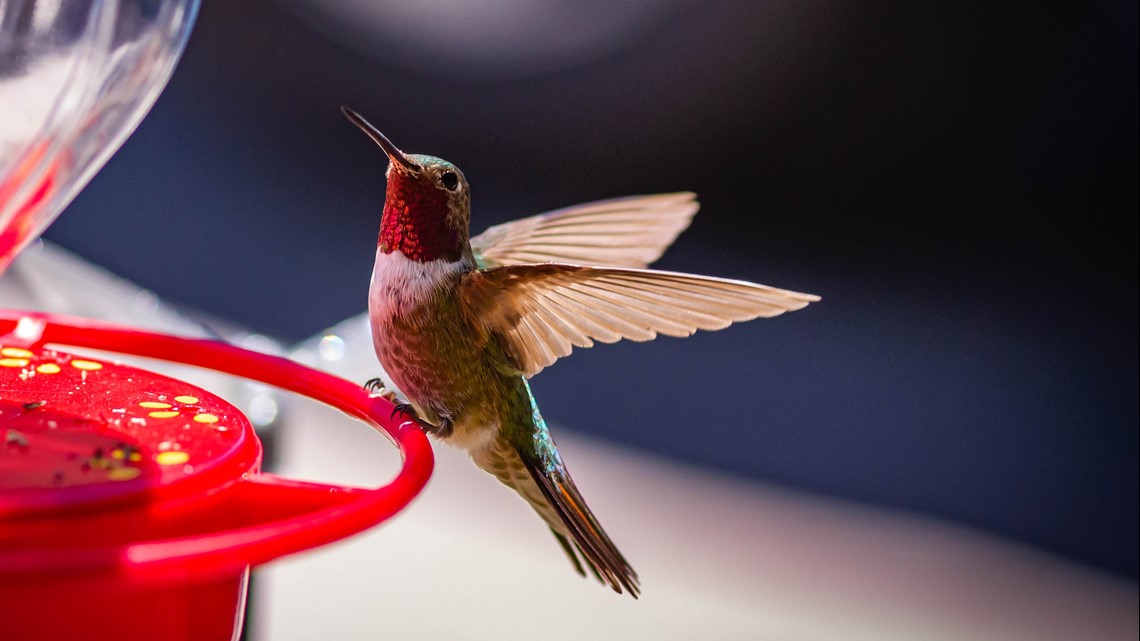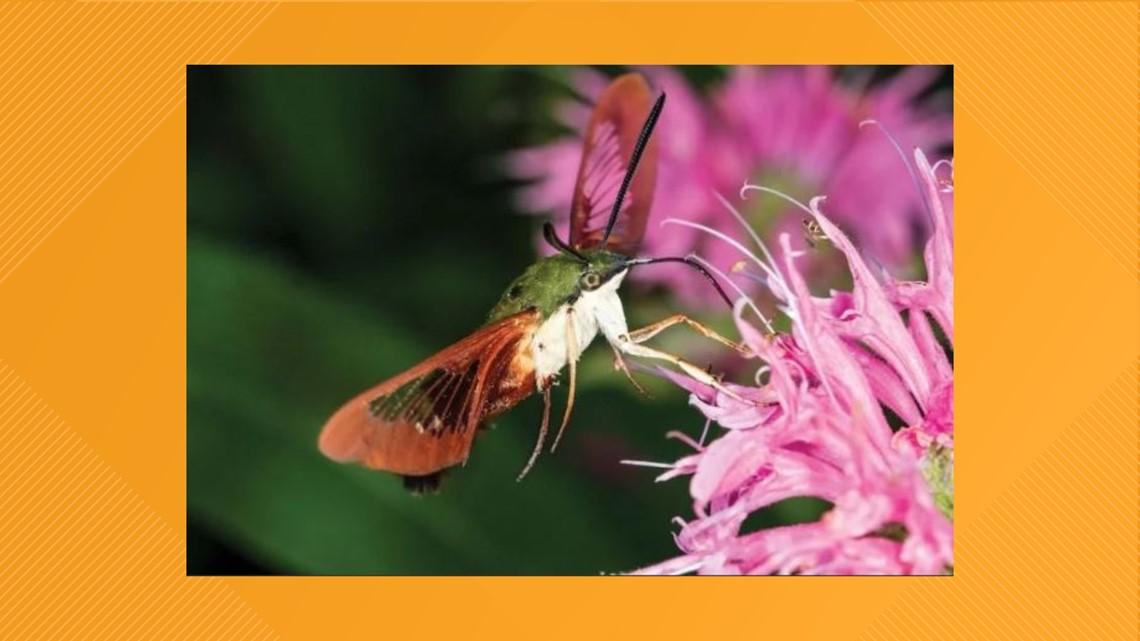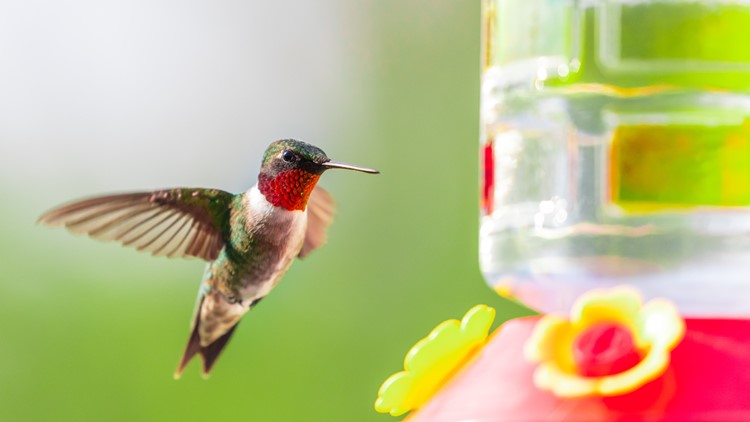ST. LOUIS — After wintering in Central and South America, hummingbirds are making their yearly migration back north.
Hummingbird Central has released its spring 2022 hummingbird migration interactive map, and hummingbird sightings have already been reported in the St. Louis area.
The unique birds stay in the Bi-state through summer and early fall and are beloved for their unique style of flight and importance to pollination.
If you're looking to make some hummingbirds feel at home in your yard this year, here's what you need to know.
Bird Flu concerns
Although bird experts have voiced concerns about bird feeders amid the ongoing Highly Pathogenic Avian Influenza outbreak, a spokesman for the Missouri Department of Conservation said they have not issued any recommendations to stop feeding hummingbirds.
Dan Zarlenga with the MDC said no hummingbirds or other songbirds tested in Missouri have tested positive. He also said the unique features of hummingbird feeders may make them even safer.
"We suspect hummingbird feeders may be even less of a risk considering there aren’t numerous species visiting them," he said.
When to put up feeders
The Missouri Department of Conservation says the best time to put up hummingbird feeders in Missouri is around April 25, when ruby-throated hummingbirds return.
Rubythroats are Missouri's most common hummingbird species, as well as the only hummingbird species that nests in the eastern U.S. If you start feeding when they arrive, they’re less likely to move on.
If you find yourself with many competing birds, you can place multiple feeders in different areas of your yard.
Attracting hummingbirds


Feeders are the most obvious way to get a hummingbird's attention. But MDC says going the natural route by planting flowers, especially ones native to the area, should be an important part of your plan as well.
MDC recommends planting red and orange tubular flowers. They are favorites of Missouri's most common hummingbird species, the rubythroat hummingbird.
Flower nectar can provide up to 90% of a hummingbird's diet, MDC said.
Here are some options that hummingbirds love:
- Cardinal flower
- Jewelweed or touch-me-not
- Royal catchfly
- Fire pink
- Wild bergamot
- Trumpet creeper
- Native honeysuckles (Lonicera dioica, L. flava, L. reticulata)
- Red buckeye (a small tree)
- Columbine
It's also good to keep some insect-pollinated plants in your yard and avoid pesticides. According to the National Audubon Society, insects are an important part of hummingbirds' diet, and babies in the nest are almost exclusively fed arthropods. A basket of overripe fruit or banana peels hung next to a feeder can attract a feast of fruit flies.
The Audubon Society also recommends having safe perches, shrubbery and small deciduous trees where they can rest and take cover, especially at the edges of the yard. They build nests on tree limbs and other small horizontal surfaces, making them out of spiders webs, lichens and other plant materials.
Cats are a danger to hummingbirds and should be kept away.
How to make nectar
When it comes to making nectar for the birds, keep it simple. MDC recommends four parts water to one part sugar. Most hummingbird feeders are red, so there's no need to add red food coloring.
An important note – never add honey or artificial sweeteners to hummingbird feeders. Honey in water can grow a dangerous fungus that attacks their tongues.
To reduce the growth of bacteria that can sicken the birds, feeders should be cleaned well and their nectar changed weekly or when it becomes cloudy.
When to take feeders down
Hummingbird feeding is most successful in late summer and early fall, with September usually being the best month. MDC said not to worry about the old adage that feeding too late into fall may delay their migration and lead them to freeze. There's no evidence that keeping feeders out keeps them from heading south on time.
Rubythroats leave around late September and are usually gone by Oct. 10. However, more hardy species such as rufous and Anna's can be attracted beyond early October as they pass through the area on their migration journey.
Identifying hummingbirds
Rubythroats are by far the most common in Missouri, but other possible sightings include Rufous, Anna's, magnificent, blue-throated, broad-billed, broad-tailed, Allen's, calliope and black-chinned hummingbirds.
Many of these species are extremely hard to identify because they're in subdued or immature plumage. MDC recommended contacting an expert if you think you've spotted an unusual species.
Be sure to look closely, as MDC noted that sphinx moths, also known as hawk or hummingbird moths, are commonly mistaken for hummingbirds.


More than 50 species of the moth are found statewide in Missouri. Most are active at dawn and dusk, or during the day, and the day-active species often mimic bees or hummingbirds. With their humming wings, long proboscis and affinity for flower nectar, it's easy to see where the confusion can sprout up.
While most sphinx moths don't cause injury to host plants, some species can wreak havoc on gardens and vineyards. Click here for more information on the insects from MDC.
For more information on attracting hummingbirds, check out MDC's online guide.
RELATED: How to celebrate spring in St. Louis
.



